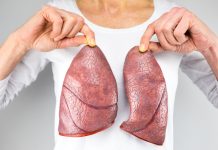At first glance of the human body, we see the physical parts – the face, hands, legs etc. Most of the scientific research done today focuses solely on the physical organs, the DNA and the intricacy of how different parts are orchestrated to function in harmony. Western medicine – primarily allopathy – treats the physical symptoms and causes of the disease. Due credit needs to be given to the allopathic medical community for providing much needed relief from chronic/painful ailments and enhancing health and lifespan. However, allopathy is not able to pinpoint the cause of the disease in some cases. So that begs the question: Is the human system only a set of functioning organs or is there something more than meets the eye? Alternative systems of healing like yoga, ayurveda, siddha, etc have shown that there is a whole other dimension in the human system – which is the energy structure that supports the physical body. Without the energy support, it is not possible for the physical body to exist on its own. The very form of our body is due to the energy structure that surrounds it.
The energy system flows in specific pathways and has several junction points. According to yogic science, there are 114 junctions or confluences. These junction points are the channels through which the energy flows. Each junction point is called a chakra which means wheel or circle because they embody movement. Of these 144 junction points or chakras, there are 7 that are major junction points as described below. Each of these seven chakras is associated with the endocrine system and governs particular areas of the body.
Muladhara (Root Chakra): This Chakra is located at the base of the spine. It is associated with the color red and connected to the earth element. It governs the excretory and reproductive organs. It is associated with feeling stable, grounded and secure. Imbalance in this chakra can cause urinary problems, bowel disorders, and a range of different muscular complaints in the hips and legs.
Swadhisthana (Sacral Chakra): This chakra is located 3 inches below the naval. It is associated with the color orange and connected to the water element. It governs the sexual organs, ovaries / testicles, bladder, bowel and lower intestine. The chakra is about pleasure, enjoyment and expression of feeling and emotion. Imbalance can cause bladder problems, frigidity, gall and kidney stones, cancer of reproductive organs.
Manipuraka (Solar Plexis Chakra): This chakra is located in the upper part of the belly. It is associated with the color yellow and connected to the fire element. It governs the stomach, upper intestines, upper back and upper spine. It is characterized by expression of personal power, mental abilities, independence and asserting ourselves in the world. Imbalance in this chakra can cause diabetes, digestive / adrenal organ illness, hypoglycaemia.
Anahata (Heart Chakra): This chakra is located in the center of the chest. It is associated with the color green and connected to the air element. It governs the heart, lungs, blood and circulation. It is associated with creativity, feelings of love and compassion. Imbalance in this chakra can cause cancer, high blood pressure, heart problems, issues with thymus, blood, circulatory system.
Vishudhi (Throat Chakra): This chakra is located at the base of the throat. It is associated with the color blue and connected with the sound element. It governs the throat, thyroid, mouth, teeth, tongue and jaw. It is associated with communication, self-expression and projecting ideas clearly. Imbalance of this chakra can cause asthma, issues with neck, lungs, thyroid, alimentary canal.
Agna (Third Eye Chakra): This chakra is located between the eyes where the eyebrows meet. It is associated with the color purple and signifies wisdom. It governs the pituitary gland, pineal gland, skull, eyes, brain, nervous system and the senses. It is the center of psychic power, higher intuition and light. Imbalance can cause glaucoma, headaches, neurological problems.
Sahasrahar (Crown Chakra): This chakra is located at the top of the head. It is commonly represented as the color white and give access to higher states of consciousness. It governs the top of the spinal cord, brain stem, pain centre and nerves. It is associated with wisdom, being one with the world and being aware of oneself. Imbalance can cause exhaustion, epilepsy, issues with pineal gland.
For these chakras to function at their peak, it is very important to first build a proper foundation. Most of the work of activating the energy is done at the muladhara chakra as it forms the very foundation of the energy system. Imbalances in the muladhara are over compensated in other chakras, which causes further imbalance. If the muladhara is not stable, the other chakras will also not function properly. So working on the muladhara is the first step. To know health, wellbeing and fulfillment, stability of the muladhara is key. However, activating the energy system is a very subtle science. Very few accomplished schools of yoga are capable of doing it. So it is important to do the needed research about the various school of yoga before going down the path of energy activation.
47 Most Famous Motivational Quotes of All-Time
49 Greatest Love Quotes
37 Inspirational Quotes that Will Change Your Life






























